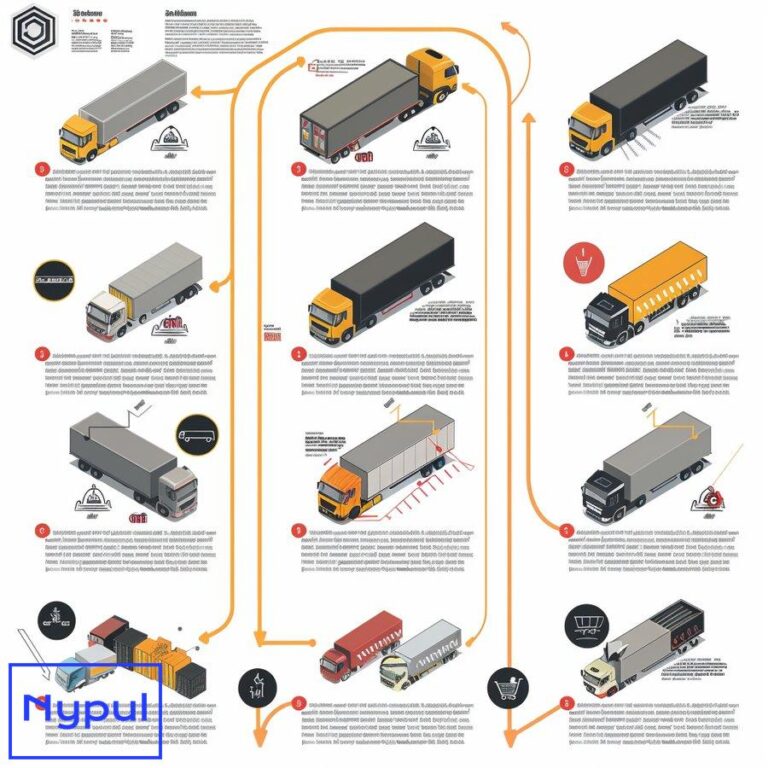What Three Factors Should We Consider When Choosing a Container
Why is selecting the right container crucial for shipping?
Choosing the optimal shipping container is essential for ensuring your cargo arrives safely, securely, and cost-effectively at its destination. The container you select has a direct impact on:
Cargo Protection
Using a container well-suited for your specific goods helps shield them from damage due to moisture, temperature fluctuations, impacts, and other hazards encountered during transit. Perishable items, for example, require refrigerated containers to prevent spoilage.

Shipping Efficiency
The right container maximizes space utilization, allowing you to transport more cargo per shipment. This lowers your per-unit shipping costs and carbon footprint. Efficiently packed containers are also easier to load, secure, and unload, reducing handling time and labor.
Regulatory Compliance
Certain goods, such as hazardous materials or food products, must be shipped in containers that meet strict regulatory standards. Failing to use a compliant container can result in customs delays, fines, or even having your shipment rejected at the port.
By carefully evaluating your container requirements upfront, you can avoid costly mistakes, minimize shipping risks, and ensure a smooth logistics process from origin to destination. Taking the time to select the optimal container pays off in improved cargo safety, efficiency, and profitability.
What are the key size and dimension considerations for containers?
Container dimensions directly affect the quantity and type of goods you can ship per load. The two most common standard sizes are:

20-foot containers
Exterior Dimensions: 20′ long x 8′ wide x 8’6″ high
Interior Dimensions: 19’4″ long x 7’8″ wide x 7’10” high
Capacity: 1,172 cubic feet
Maximum Payload: 61,289 lbs
40-foot containers
Exterior Dimensions: 40′ long x 8′ wide x 8’6″ high
Interior Dimensions: 39’6″ long x 7’8″ wide x 7’10” high
Capacity: 2,390 cubic feet
Maximum Payload: 57,759 lbs
The 40-foot high cube variant adds an extra foot of height (9’6″ exterior) for an interior capacity of 2,694 cubic feet. This is ideal for lightweight, voluminous cargo.
When selecting a size, consider:
Cargo Volume
Ensure the container’s interior dimensions can accommodate your cargo quantity, accounting for any specialized packaging or dunnage required.
Cargo Weight
Your loaded container must not exceed the maximum payload, which factors in the container’s tare weight. Verify your cargo density is compatible with the container’s capacity.
Handling Equipment
Confirm that your facilities and logistics partners have the proper equipment to handle your chosen container size, such as cranes, forklifts, and chassis.
Route Constraints
Some routes may have length, height, or weight restrictions that limit usable container sizes. Double-check your container’s specifications against your planned shipping route.
By optimizing your container size selection for your cargo’s unique characteristics and shipping requirements, you can maximize loading efficiency and minimize transportation costs.
How do different container types impact cargo safety and efficiency?
In addition to standard dry containers, several specialized container types are designed to protect sensitive cargo and streamline handling for goods with unique shipping requirements. Key options include:
| Container Type | Description | Ideal For |
|---|---|---|
| Flat Rack | Collapsible sides with a fixed or foldable end wall | Oversized cargo like machinery, vehicles, or industrial materials |
| Open Top | Removable soft or hard top for loading oversized goods | Tall cargo loaded by crane like logs, scrap metal |
| Refrigerated | Insulated with integrated refrigeration units | Temperature-sensitive goods like produce, pharmaceuticals, chemicals |
| Insulated | Thermal insulation to protect against extreme temperatures | Cargo sensitive to heat or cold but not requiring refrigeration |
| Tank | Cylindrical steel tanks within a rectangular frame | Bulk liquids like food oils, petroleum products, chemicals |
Specialty containers enhance cargo safety by:
Damage Prevention
Designs tailored to the unique physical and environmental demands of each cargo type minimize damage risks during handling and transit.
Temperature Control
Insulated and refrigerated containers protect perishable and temperature-sensitive goods from harmful fluctuations and spoilage.
Contamination Prevention
Sealed designs prevent moisture, dust, and pests from contaminating cargo. Tank containers safely transport liquids without risk of leakage or spillage.
Specialized containers also boost shipping efficiency through:
Optimized Loading
Designs like flat racks and open tops enable fast, easy loading of oversized and odd-shaped cargo using cranes.
Streamlined Handling
Specialized equipment like tank chassis and gen set generators seamlessly integrate with specialty containers for efficient transportation and monitoring.
Choosing the optimal container type based on your cargo’s unique characteristics and handling needs is key to ensuring safe, on-time, cost-effective delivery.
What should you know about container condition and age?
A container’s physical condition and age significantly impact its protective capabilities and suitability for your cargo. When assessing container condition, key factors to consider include:

Structural Integrity
Inspect the container for any dents, cracks, or holes in the walls, roof, and floor that could compromise weather-tightness or allow entry of moisture, pests, or contaminants. Ensure doors and hardware are in proper working condition.
Cleanliness
Check that the container is clean, dry, and free from dirt, debris, and residue from previous cargo to avoid contamination. Look for any signs of rust or corrosion that could indicate compromised structural integrity.
Weatherproofing
Verify that door seals are intact and effective at preventing water and moisture intrusion. Confirm that the container is watertight by inspecting for daylight visible through gaps or holes.
Odors
Note any unusual or strong odors that could indicate improper cleaning after transporting odorous cargo or the presence of mold or other contaminants.
Age also plays a role in container selection:
Newer Containers (0-3 years)
Typically in the best structural condition with minimal wear and tear. Ideal for sensitive, high-value, or perishable goods requiring maximum protection.
Mid-Age Containers (3-12 years)
Most common and readily available. Suitable for most standard cargo types when in good repair and properly maintained.
Older Containers (12-25+ years)
More likely to have structural issues or reduced water-tightness. Best limited to rugged, non-sensitive goods unless thoroughly inspected and refurbished.
Carefully evaluating container condition and age against your cargo’s fragility, value, and sensitivity to external factors is critical for selecting a container that will safely and reliably protect your goods throughout their journey.
How do you balance size, type, and condition when choosing a container?

Selecting the optimal container involves weighing multiple interconnected factors to find the combination that best serves your cargo’s unique needs while maximizing shipping efficiency and cost-effectiveness. Key considerations include:
Prioritizing Cargo Requirements
Start by clearly defining your cargo’s characteristics, including dimensions, weight, density, fragility, environmental sensitivity, and any special handling needs. Identify the non-negotiable container attributes required to safely transport your goods.
Evaluating Size Options
Determine the smallest container size that can efficiently accommodate your cargo volume and weight while allowing for proper securing and dunnage. Consider any route restrictions that may limit size options.
Assessing Specialty Type Needs
Evaluate if your cargo requires a specialized container type for safe transit. Temperature-sensitive goods, for example, necessitate a refrigerated container, while oversized cargo may demand a flat rack or open top.
Factoring Condition and Age
Based on your cargo’s fragility and sensitivity, set acceptable thresholds for container condition and age. Newer, premium-grade containers are essential for sensitive, high-value goods. Mid-grade containers may suffice for standard cargo if in proper repair.
Analyzing Cost Trade-offs
Compare the costs of different container options that meet your cargo’s requirements. Consider if a smaller size, older container, or alternative type could provide sufficient protection at a lower price point without compromising cargo safety.
Optimizing for Efficiency
Look for opportunities to maximize shipping efficiency through container choice. For example, a 40-foot high cube container may enable shipping more lightweight goods per load than a standard 40-foot container, reducing total loads and costs.
By systematically evaluating how size, type, condition, and age impact your cargo’s unique needs and shipping efficiency, you can find the optimal container choice that balances performance and value for your specific transport scenario.
What factors should influence your final container selection?
Making a final container selection involves holistically assessing all key factors to choose the option that best supports your business priorities and shipping goals. Primary considerations include:
Cargo Protection
Prioritize container attributes that are non-negotiable for safely transporting your specific cargo type to avoid damage, spoilage, or contamination risks. Focus on size, type, and condition requirements that directly impact cargo integrity.
Regulatory Compliance
Verify that your selected container type and condition meet all applicable regulatory requirements for your cargo and planned shipping route, such as hazardous material restrictions, food safety standards, or customs protocols.
Total Landed Costs
Evaluate the full cost impact of your container choice, factoring in both direct transportation costs and indirect expenses like cargo damage, loading efficiency, and inventory carry costs. Aim to minimize total landed costs while maintaining necessary cargo protection.
Shipment Urgency
Consider how container availability and loading efficiency may impact shipment timing. For urgent deliveries, prioritize container options that are readily available and quick to load, even if more expensive, to avoid costly delays.
Sustainability Impact
Assess how container choice aligns with your company’s sustainability goals. Prioritize container sizes and loading configurations that maximize cargo volume per shipment to reduce total loads and emissions. Consider newer, more efficient containers over older, less energy-efficient options.
Future Flexibility
Evaluate your container choice in the context of your anticipated future shipping needs. If you expect changing cargo types or volumes, prioritize containers with adaptable configurations like adjustable cargo bars or removable walls for maximum flexibility.
By weighing these key factors against your unique business context and priorities, you can confidently select the container option that offers the best overall value for your shipment. Remember, the right container is one that safely delivers your cargo on time and on budget while supporting your company’s broader logistics strategy and goals.
In summary, choosing the right shipping container is a critical decision that directly impacts the safety, efficiency, and profitability of your cargo transportation. By systematically evaluating your options across key dimensions like size, type, condition, and age, and assessing how each factor influences your specific cargo needs and business priorities, you can find the optimal container choice to keep your goods moving smoothly from origin to destination.





